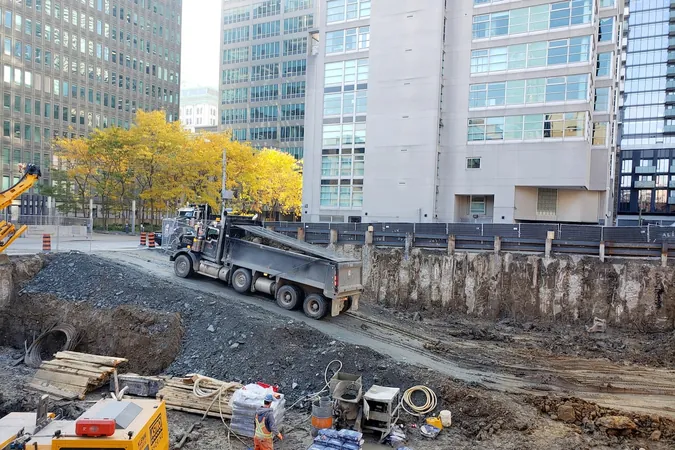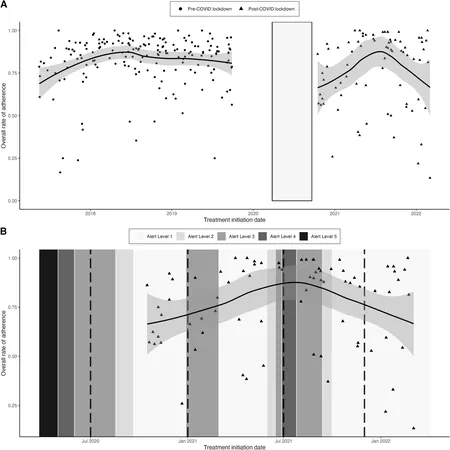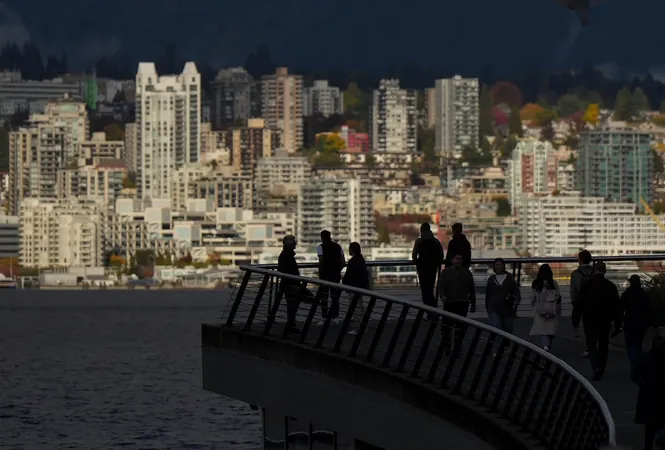
Ontario’s Struggle with Excess Soil Regulations: Are Environmental Protections Just Empty Promises?
2024-10-14
Author: Jacob
Introduction
In Ontario, the new regulations surrounding the disposal and management of excavated dirt—dubbed "excess soil"—from construction sites are facing serious criticism for inadequate enforcement. Critics argue that what was once heralded as a progressive, world-class initiative is not living up to its potential and continues to put the environment and public health at risk.
Background
Over recent years, the Ontario Ministry of the Environment, Conservation and Parks implemented a series of stringent rules aimed at ensuring that excavated soil is treated as a valuable resource rather than mere waste. Traditionally, large quantities of this soil generated from construction projects—like roads, subways, and residential buildings—were carelessly dumped in landfills with minimal oversight.
Regulatory Initiatives
To combat this, the On-Site and Excess Soil Management Regulation mandates that large volumes of excavated soil must now be tracked in a provincial registry. Property owners are required to test excavated soil, maintain detailed records, and accept legal accountability for its disposal. The system was designed to encourage reuse of the soil, connecting parties in need of dirt for construction while minimizing waste.
Enforcement Concerns
Despite these good intentions, there is growing concern over enforcement measures. Prominent developer Jeff Goldman highlighted that there have been numerous reports of “large-scale non-compliance” that remain unaddressed. He referred to the regulations as “hollow hardware,” suggesting that they are ineffective without robust enforcement efforts.
Official Responses
The Ministry of the Environment has reported some level of enforcement, with 18 officer orders and over 1,000 non-compliance directions issued since April 2021, alongside multiple investigations and resultant charges in the excess soil sector. Yet environmental advocates contend that these measures fall short of ensuring accountability, particularly given that many contractors and developers continue to operate outside the regulatory framework.
Complex Regulatory Landscape
Janet Bobechko, an environmental lawyer, noted that while the enforcement statistics indicate some responsiveness, many violations go unpunished due to the complexity of the regulations and the ministry’s limited resources. The bulk of enforcement actions seem to target those companies blatantly disposing of contaminated soil improperly, which is only a fraction of the larger issue.
Challenges in Compliance
Local construction professionals, like Patrick McManus, stress that the ministry's approach is reactive rather than proactive. Complaints trigger inspections, but without adequate funding and staff, widespread surveillance of compliance remains impractical. There’s a notable lack of inspections or registration among smaller soil disposal sites, especially since many municipalities lack the capabilities to enforce these regulations effectively.
Financial Implications
Furthermore, the new rules have significant financial implications. Costs associated with compliance have risen sharply. For example, projects generating over 500,000 cubic meters of soil face registration fees that have soared from $30,000 to $150,000, signaling that risk aversion is compelling some developers to circumvent registration altogether, thus exacerbating illegal dumping.
Environmental Risks
Chad Morden, a construction estimator, indicated that basic compliance mechanisms have resulted in fewer registered sites for transferring soil, leading to more dumping in environmentally sensitive areas. This indicates a dire need for heightened scrutiny as non-compliance may pose dire environmental consequences.
Looking Ahead
As Ontario gears up for new restrictions slated for January 1, it’s anticipated that illegal soil dumping may surge as construction firms look for less costly disposal methods. Experts are already warning that the situation could worsen, hindering the province’s environmental goals.
Conclusion
In conclusion, while Ontario’s environment officials assert that efforts are underway to enforce compliance with excess soil regulations, the reality on the ground paints a different picture. Only time will tell if these critical regulations will be effectively enforced or remain merely aspirational, leading to more environmental degradation instead of the hoped-for stewardship of a valuable resource. Will these regulations prove to be a turning point, or a cautionary tale of negligence? Only an increase in enforcement and genuine accountability can illuminate the path forward.









 Brasil (PT)
Brasil (PT)
 Canada (EN)
Canada (EN)
 Chile (ES)
Chile (ES)
 España (ES)
España (ES)
 France (FR)
France (FR)
 Hong Kong (EN)
Hong Kong (EN)
 Italia (IT)
Italia (IT)
 日本 (JA)
日本 (JA)
 Magyarország (HU)
Magyarország (HU)
 Norge (NO)
Norge (NO)
 Polska (PL)
Polska (PL)
 Schweiz (DE)
Schweiz (DE)
 Singapore (EN)
Singapore (EN)
 Sverige (SV)
Sverige (SV)
 Suomi (FI)
Suomi (FI)
 Türkiye (TR)
Türkiye (TR)